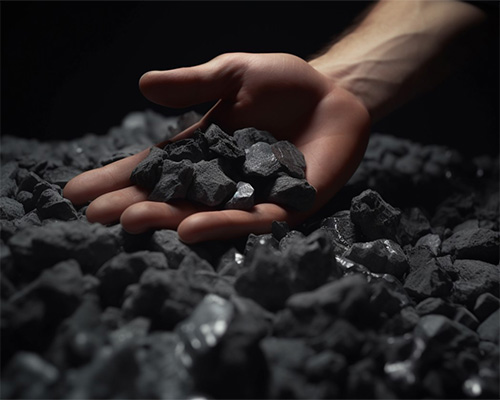Where is Tantalum Mined
What is Tantalum Rare Metal?
Tantalum is a rare metal, there is 0.0002% of the content in the earth's crust. It exits with niobium in nature. There are many minerals containing tantalum, but tantalum Minerals (Ta/Nb ≥ 1) are not much, the main tantalum minerals are of industrial value: (Fe, Mn)(Ta, Nb)2O6, FeTa2O6, (Na, Ca) Ta2O6 and (Y, Ca, Ce, U, Th) (Nb, Ta, Ti) 2O6.

A brief history of tantalum and niobium metallurgy
(1) In 1801, British chemist Hart Chet discovered the element niobium; in 1802, the Swedish chemist Anders Gustaf Ekberg discovered the element tantalum.
(2) In 1865, Swiss chemist Ma Lignac invented by fractional crystallization of tantalum and niobium separation.
(3) In 1866, at a high temperature, the reduction of niobium chloride with hydrogen, metal niobium was first obtained.
(4) In 1903, malleable metal tantalum was prepared by reduction of sodium fluoride tantalum complex system.
(5) In 1922, they produced tantalum powder successfully with molten salt electrolytic, so the production of tantalum reached the industrial scale.
(6) invented the carbon reduction method of niobium in 1944, which laid the foundation for the industrial production of niobium

The world's first, the second largest tantalum mines are Wodgina and Greenbushes, which are distributed in Australia. Tantalum mainly exists in tantalum ore, niobium ore, and coltan, but in addition to these sources, tantalum exists in tin stone with an isomorphous state and is also an important resource. It is very difficult to separate from the tantalum cassiterite with the processing method, they enter the metallurgical slag when tin smelting. With the decreasing of the mineral resources and the dilution of tantalum, this kind of tin slag tantalum resource has become an important source of tantalum raw materials. Guangxi, Malaysia, Indonesia, Yunnan, Burma, and Thailand have the most abundant tantalum from the tin ore belt, Thailand and Malaysia are important suppliers of tantalum raw materials.
With the decreasing of tantalum mineral resources, the supply of tantalum raw materials is becoming increasingly short, and the use of two tantalum resources is more and more important. At present, the use of two tantalum resources accounts for about 10% ~ 20% of the total supply of tantalum raw materials.
Distribution of tantalum resources in the world
As rare metal tantalum, the amount of resources on earth is relatively small, compared to other metals, the world's proven tantalum resources are mainly distributed in Australia and Brazil, the two resource reserves are sufficient to meet the expected demand. Australia accounted for nearly 62% of global tantalum reserves, followed by Brazil, accounting for 36% of the total.
According to the U.S. Geological Survey (USGS) data released in 2015, there are more than 100 thousand tons of tantalum reserves in the world, of which there are 67 thousand tons in Australia and about 36 thousand tons in Brazil. Tantalum resources are distributed in the United States, Burundi, Canada, Congo (DRC), Ethiopia, Mozambique, Nigeria, and Rwanda.









